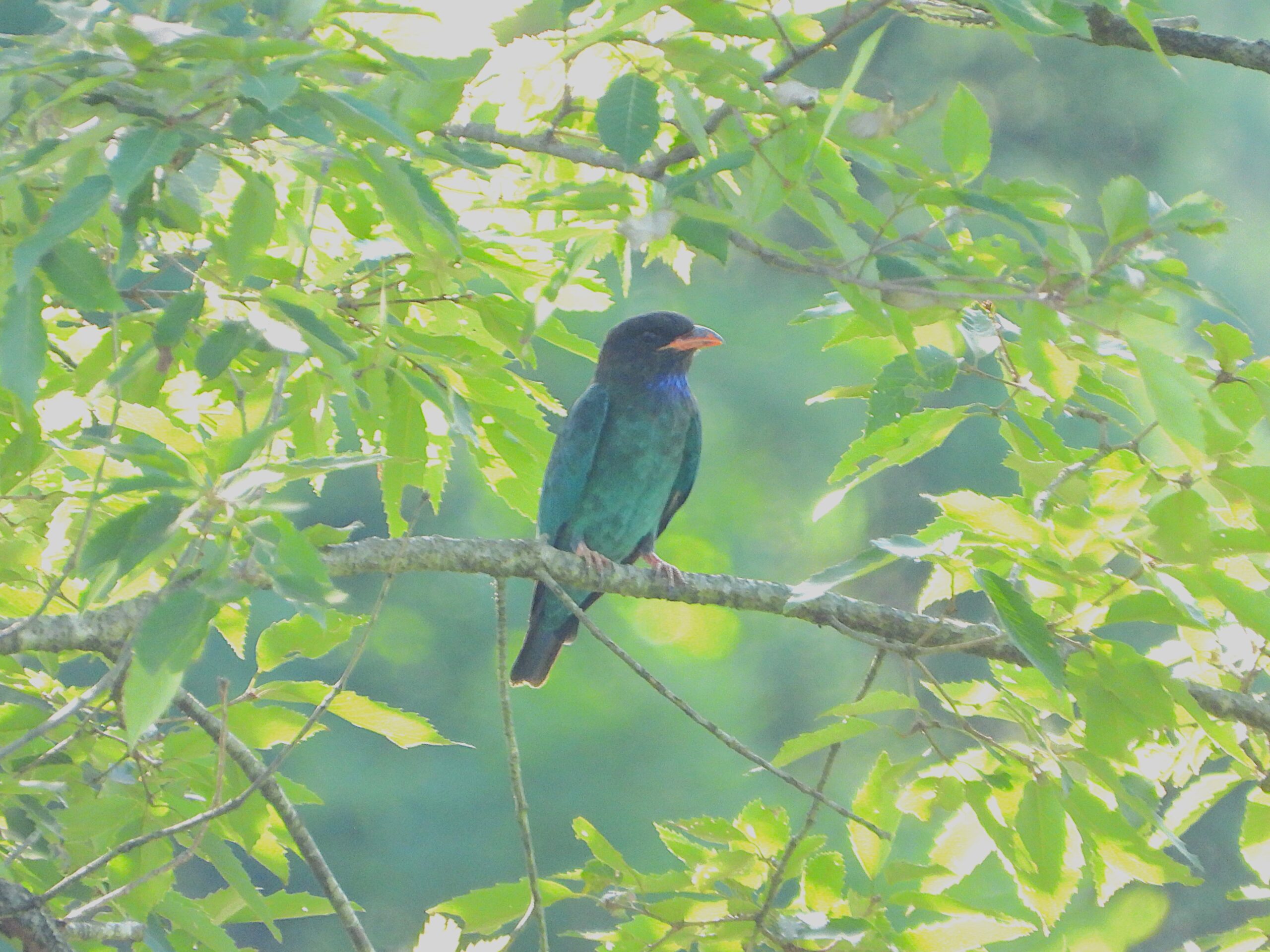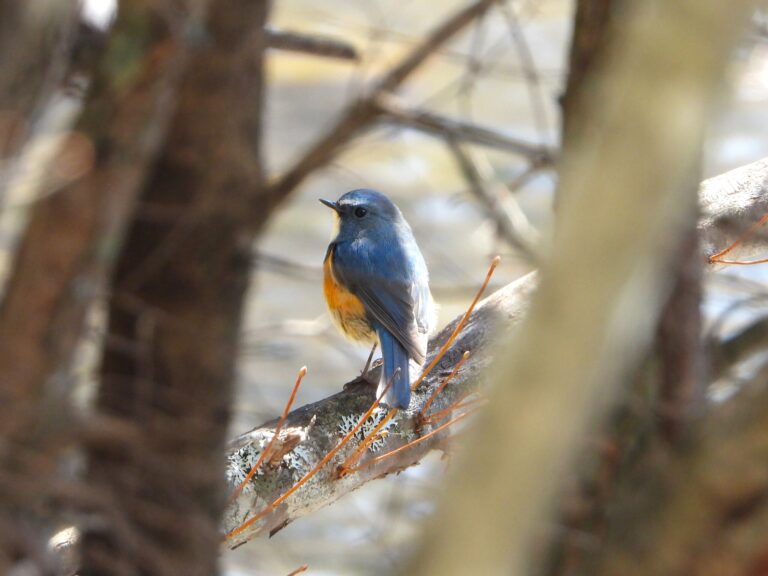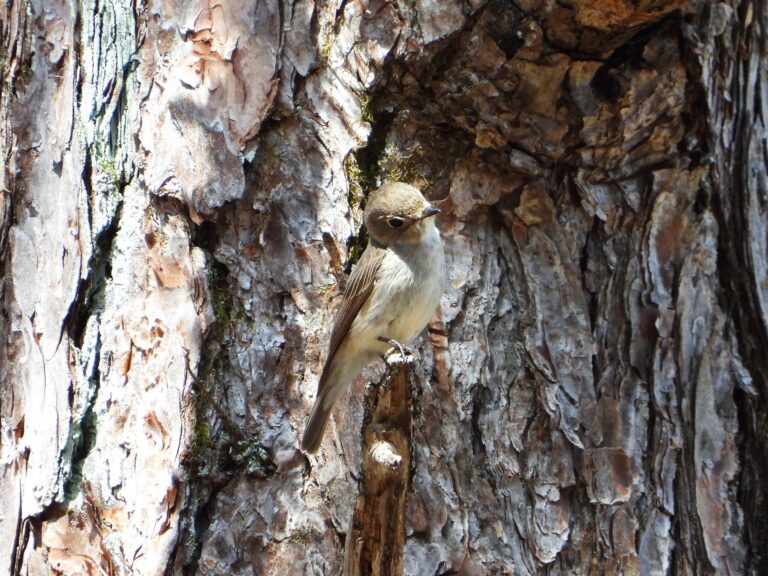Oriental Dollarbird (Eurystomus orientalis) – Wildlife of Japan
Introduction
The Oriental Dollarbird is a dazzling summer visitor to Japan, famous for the pale round “coins” that flash on its wings in flight. Despite its tropical look, it breeds across warm lowlands of Honshu, Shikoku, and Kyushu, favoring open woodlands and satoyama landscapes with tall trees. It migrates south in autumn to spend the winter in Southeast Asia and northern Australia.
Appearance
This roller reaches about 27–30 cm in length. The plumage is a glossy dark greenish-blue with a purplish sheen, appearing almost black in dim light. The bill and legs are bright orange-red. The most distinctive feature is the round pale patch on each wing, visible only in flight. The tail is short and slightly square-ended. Juveniles are duller with brownish tints and a darker bill base.
Habitat & Distribution
In Japan, the Dollarbird breeds in lowland forests, river valleys, and farmlands bordered by scattered tall trees. It prefers areas with open flight space for aerial hunting. Breeding records are concentrated in western and central Honshu, Shikoku, and Kyushu. It is rare or irregular in northern regions such as Tohoku and Hokkaido. After breeding, birds migrate south to tropical Asia and northern Australia.
Where to See in Japan
From May to August, look for them perched on power lines or dead branches overlooking fields and rivers. They often call loudly and sally out to catch insects in midair. Good viewing locations include Okayama (Kibichuo Town, where nest-box programs are active), Hiroshima, and parts of Kyushu.
Behavior
Oriental Dollarbirds hunt using a “perch-and-sally” technique: they wait on an exposed perch, launch swiftly to snatch flying insects, and return to the same spot. Their flight is powerful and direct, often displaying the pale wing patches. The call is a harsh, rattling “kak-kak-kak,” frequently heard near nests or during aerial chases.
Diet
Mainly large flying insects such as beetles, cicadas, moths, and dragonflies, which they catch in flight. Occasionally they take prey from the ground or branches. They are active hunters from dawn to dusk, and parents feed their chicks intensively from early morning until sunset.
Reproduction
Breeding begins from late May through July. They do not dig their own cavities but use natural tree holes or abandoned woodpecker holes. Pairs may also use artificial nest boxes when available. Clutches usually contain 2–5 white eggs. Both parents share incubation (about 20–21 days) and feeding duties. Fledging occurs around mid- to late August before autumn migration.
Conservation
Globally, the species is listed as Least Concern by the IUCN, but Japanese populations are small and localized. Habitat loss, the removal of old trees, and the replacement of wooden poles have reduced nesting opportunities. Community projects in Okayama and Hiroshima have shown that nest-box installation helps maintain local breeding populations. Some prefectures (e.g., Kyoto, Fukuoka) list the species as endangered at the regional level.
Author’s Impression
I once spotted an Oriental Dollarbird perched on a power line while driving along a quiet country road. It’s a rare sight in Japan, and I still remember the genuine excitement I felt at seeing such a beautiful bird.







